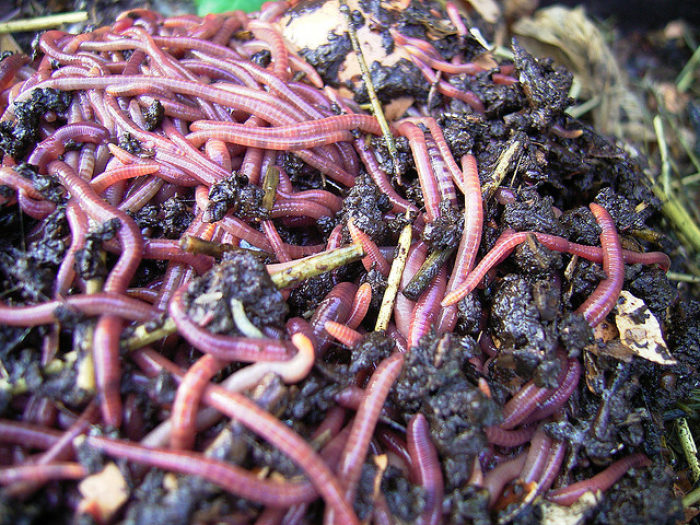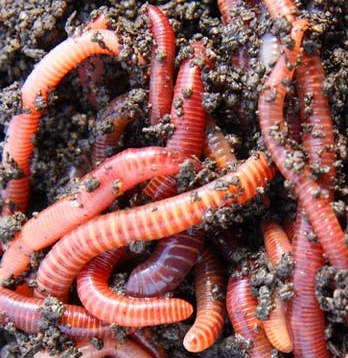Where To Find Red Wigglers Fundamentals Explained
The Basic Principles Of Where To Find Red Wigglers
Table of ContentsGetting The Where To Find Red Wigglers To WorkThe Best Guide To Where To Find Red WigglersWhere To Find Red Wigglers Things To Know Before You BuyGet This Report on Where To Find Red WigglersGetting My Where To Find Red Wigglers To WorkWhere To Find Red Wigglers - Truths4 Simple Techniques For Where To Find Red Wigglers
If you have a difficult time situating them, attempt using a shovel to dig into the ground and damage the damp dirt with your hands to find them (Where To Find Red Wigglers). Saturate your yard or yard with water and look for your worms once it obtains dark.Lift it using take advantage of and search for your worms inside the opening. Note that you may need to dig a couple of times before they appear. Do not fail to remember to look under rocks, blocks, wood, and various other objects you might locate on the ground, as that's where worms typically live. You should be careful when doing this as you may come across unsafe pets beneath, including snakes, spiders, and scorpions.
As soon as you capture numerous worms, you will certainly intend to dip your fingers right into sawdust to dry them and improve your next grip. Note that you shouldn't remove too many worms from one place as this can adversely influence that setting. Put your worms right into their container and shop them in the fridge.
You can also use a pitchfork to lure worms over the ground. Additionally recognized as a worm groaning stick, this standard method involves sticking the pitchfork right into the ground and after that scrubing it with a piece of steel or timber. The vibrations that are created resemble the audio of a mole, which causes the worms to surface.
Where To Find Red Wigglers Things To Know Before You Get This
For long-lasting worm storage space, we recommend constructing a dedicated worm farm. Hopefully, you found numerous means to capture your worms the following time you require them after shutting hours or when you're feeling too lazy to get in the cars and truck and drive several miles to the closest worm dealership!
This overview will certainly introduce you to the red wiggler to include a much deeper on dive on the species and info on reproduction, life cycle, and recreation. We'll discuss just how to maintain red wigglers and why they must be the go-to worm for many composters. The red wiggler (binomial name: eisenia fetida) is the world's most typical composting worm.
A research study suggests that both can create hybrid children, a phenomenon which must otherwise be thought about difficult between a lot of worm types. Fun truth: The "fetid" part of the binomial name refers to what some say is a reeky secretion the red wiggler utilizes to fend off killers. I've been dealing with them for years and never noticed this! The makeup of a red wiggler appears like that of various other common earthworms; a long-segmented body begins at the sharp head and ends at a slightly-flatted tail.
The digestive system is straightforward, starting at the mouth where the worm starts to consume its food prior to passing it on to the throat. The vocal cords is a muscular area which acts like a pump to draw food into the mouth before pumping it out right into the esophagus. The esophagus is narrow and thin-walled and acts as the "waiting space" for the gizzard.
Where To Find Red Wigglers Things To Know Before You Get This
Keep in mind: This requirement for grinding is why grit is advised in a worm container. The worm features no indigenous grinding capacity so the worm depends on consumed grit to aid grind its food in the gizzard. The stomach is where the very first chemical failure of food happens with the assistance of a protein-busting enzyme.
The intestinal tract forms the longest part of the worm and is where the majority of food digestion occurs through enymatic procedures. The spreadings at some point travel through the anus at the end of the worm as capsules coated with a biologically-rich mucus. (You're not consuming I wish.) Red wigglers will certainly link around one another, exchanging sperm through their skin.
Within 42 days, these infant worms will certainly get to sex-related maturation as shown by the development of the clitellum. A mature red wiggler can be expected to live between one to three years (Where To Find Red Wigglers). The magnificent red wiggler may often be made use of as a bait worm for smaller sized fish or as a healthy protein resource for hens and reptiles
And as discussed above, they are the most common composting worm in the world. Why? Well there's probably not simply one factor. Instead, a combination of price, strength, and comfort in a large range of temperatures makes it one of the most ideal composting worm for the majority of brand-new vermicomposters. Red wigglers and their cocoons can make it through in a wide range official site of conditions.
Examine This Report about Where To Find Red Wigglers
This is an usual practice amongst worm shippers who do not want to risk having the worms sit in a warm or cold stockroom over the weekend. Worm farmers are not storing worms in a circumstance where they prepare to deliver. The worms must be gathered from their environment first, so farmers will typically establish a Friday or Saturday deadline in order to harvest in time for a Monday delivery.
To save on delivery expense, you might intend to see if there are any kind of close-by "Mom and Pop" shops via a Google search. If you don't find what you're trying to find, then I welcome you to look into worms with the Urban Worm Firm! The quantity of red wigglers you buy must be only dependent upon the surface you have offered for vermicomposting.

9 Simple Techniques For Where To Find Red Wigglers
For finest results, you wish to strive about 60-70% dampness level. The simplest examination for this is to squeeze a handful as tough as you can. At the best moisture degrees which is just under 70% that handful should hardly produce one drop of fluid. pH in a worm bin is rather easy to preserve.
The European Nightcrawler, the larger cousin of the red wiggler, is simply as starved and additionally produces an excellent bait worm. Yet it chooses a little bit of a cooler environment click this than the red wiggler. The African Nightcrawler is a huge composting worm and makes a stunning, granular actors.
The Indian Blue is voracious, however additionally chooses a warmer environment and it additionally exhibits a tendency to run away the container. The red wiggler is a hardy worm and isn't as particular concerning its climate. I like to call it the Ford Taurus of vermicomposting worms; you will not boast to your hardcore composting buddies that you have them, yet they will certainly serve you well.
See This Report about Where To Find Red Wigglers
Like any other bait, a worm's efficiency has pertained to depend upon its presentation. H.G. "Tap" Tapply highlighted this point almost a half century back in one of his Field & Stream columns. "A worm is such a shapeless creature," he wrote, "there does not appear see this here to be significantly a fisherman can do with it except stab it on a hook and throw it right into the water." However as Tap demonstrated, an angler can do a bargain to make a worm much more appealing.

Early morning is prime feeding time, and the insubstantial bait's slow-moving descent leaves 5 inches of agonizing protein completely sight for a long time. After you have actually made the actors, keep the bond open and put the rod in a forked stick. The line will certainly fall off the pole in sluggish loops as the worm resolves, however generally the slow loopholes will come to be a blur, and the morning will suddenly obtain rather interesting.
You can fish deep and cover a whole lot of area, and the crawler appears to be the best touch for this transitional time, when the smallmouths have yet to secure on to a favored forage. Dark jigsblack, brown, and purpleseem to match the nightcrawler's shade. I generally make use of an entire 'crawler, like marabou dressing, and go down the pole for two or 3 seconds when I obtain a hit.
The Single Strategy To Use For Where To Find Red Wigglers
If it's there, set the hook with a move instead than a jerk. As soon as in a while you'll locate yourself hooked to those slow, hearty tugs, and feel the weight of a good walleye.